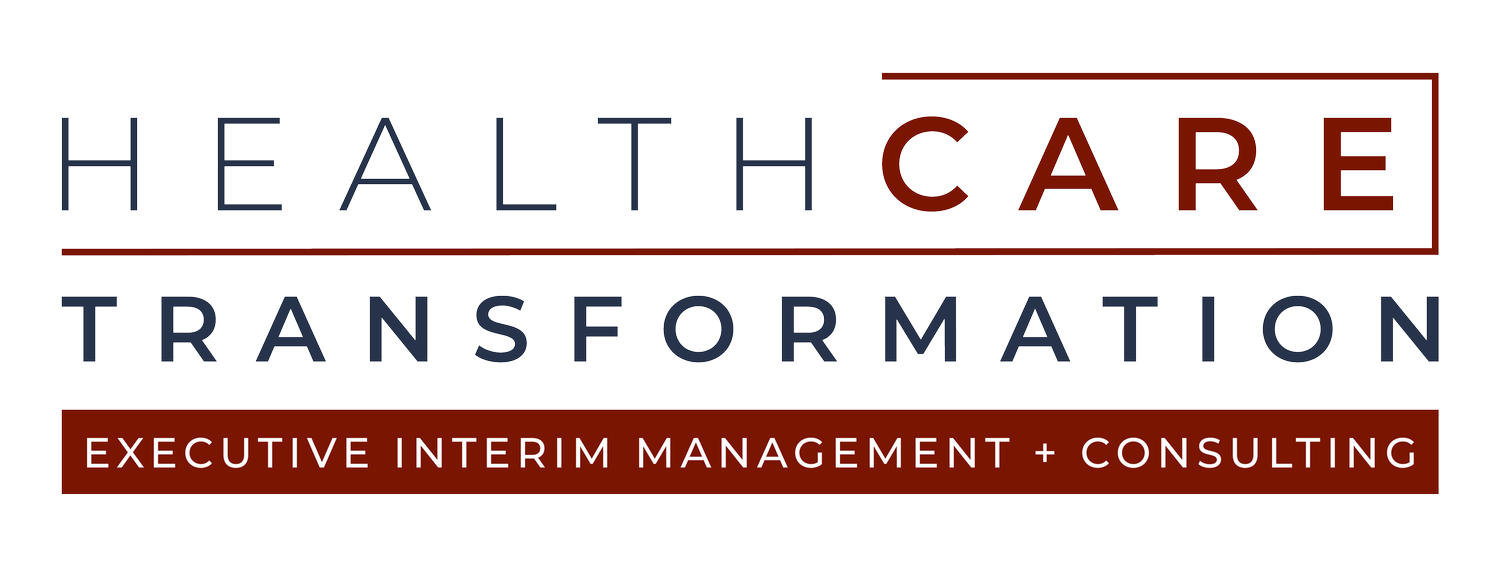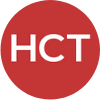Understanding the Rising Cost of Healthcare: Key Factors and Solutions
Introduction to Healthcare Spending
The U.S. healthcare system is notoriously complex, and rising healthcare costs are a pressing concern for everyone — from individual patients and families to employers and government programs.
According to the Centers for Medicare & Medicaid Services (CMS), national health expenditures are projected to reach $6.2 trillion in 2027. This staggering number reflects the immense scale of healthcare spending, which now accounts for a significant portion of the U.S. economy, far exceeding spending levels in other wealthy nations.
Rising healthcare costs aren’t just a financial issue — they directly affect access to care, quality of outcomes and overall public health.
For individuals, increasing premiums, out-of-pocket costs and prescription drug expenses can strain household budgets. Employers face higher healthcare benefits costs, which often translate into slower wage growth or reduced hiring capacity. Government programs like Medicare and Medicaid must balance growing demand with limited resources, often facing political and logistical challenges. Understanding the drivers of these rising costs is essential to developing practical solutions that can control spending while improving health outcomes across the nation.
Several factors contribute to these rising costs, including an aging population, advances in medical technology, increasing medical spending and high prescription drug prices. These trends intersect with the broader healthcare landscape, impacting insurance premiums, hospital margins and the availability of quality care for patients.
By unpacking these factors, we can better understand the strategies needed to create a sustainable healthcare system.
Factors Contributing to Rising Healthcare Costs
One of the primary drivers of rising healthcare costs is the fee-for-service model, which most U.S. health insurance plans follow. Under this model, providers are paid for each service delivered, incentivizing quantity over efficiency. While it ensures access to care, it can also encourage unnecessary tests, procedures or hospital visits, driving up medical costs and overall healthcare spending.
Chronic Illnesses
Chronic illnesses are another major contributor. Conditions like diabetes, heart disease and high blood pressure require ongoing monitoring, treatment and medication. As the prevalence of these conditions increases, so does the demand for combating them. Think: more medical care, prescription drugs and long-term health management programs.
Chronic Disease Management
Chronic disease management is not only costly but also highly resource-intensive, requiring coordinated care teams, frequent visits and patient education. Furthermore, patients admitted to hospitals with preexisting health conditions may have longer length of stays. “Diabetes” may be the diagnosis, but symptoms often include obesity, hypertension and related metabolic issues that demand continuous, multidisciplinary care.
Learn how strategic case management leadership helped one hospital reduce patient length of stay in our recent case study.
Prescription Drug Costs
Prescription drug costs, particularly for innovative or specialty medications, have skyrocketed in recent years. Drug manufacturers set prices based on research and development costs, market demand and competitive strategies, often negotiating directly with insurers or pharmacy benefit managers (PBMs). While these treatments can provide life-saving benefits, their high cost contributes significantly to overall healthcare spending.
Cost of Hospital Care
Hospital care is another substantial component of healthcare expenditures. Staffing costs, wages for specialized professionals and costs for medical equipment and supplies all add to the financial burden. Rural hospitals and smaller facilities often face higher per-patient costs due to lower patient volumes and limited negotiating power, which can strain both budgets and access to care.
Finally, medical cost trends are influenced by broader policy decisions, technological advancements and societal factors such as population growth — most notably an aging population — and lifestyle-related health risks. Understanding these trends is critical for developing effective cost-control strategies and improving the sustainability of the healthcare system.
Inflation and the Rising Cost of Healthcare
Healthcare costs do not exist in a vacuum. They are closely tied to broader economic factors such as inflation tariffs, and the general cost of living. Inflation drives up the prices of medical supplies, pharmaceuticals and labor, which directly impacts hospital budgets and operational costs.
As a result, patients face higher out-of-pocket expenses, rising insurance premiums, and increased medical debt. In 2023, nearly 41% of Americans reported having medical or dental debt, illustrating the financial strain that accompanies escalating healthcare costs.
Rising costs also affect healthcare providers. Hospitals must pay more for equipment, utilities and staff salaries, creating cash flow challenges and sometimes forcing adjustments to service pricing or staffing.
Prescription drug costs are particularly sensitive to economic pressures, with annual price increases often outpacing general inflation. Patients may inappropriately ration medications or delay treatments, which can lead to worse health outcomes and increased hospitalizations over time.
To address these challenges, many healthcare organizations are exploring flexible payment solutions, interest-free installment plans and AI-driven tools to help predict patient financial capacity and optimize billing. These strategies aim to maintain access to care while ensuring financial sustainability for providers in an increasingly costly economic environment.
Health Coverage and Access
Health coverage plays a central role in financing healthcare and shaping costs. Private insurance plans — including employer-sponsored coverage and individual market plans — are key players in the healthcare ecosystem. These plans determine the scope of services covered, reimbursement levels and patient cost-sharing, directly influencing how care is delivered and consumed.
Public programs like Medicaid and Medicare provide essential coverage for vulnerable populations, including low-income families, older adults and people with disabilities. Ensuring broad access to these programs helps reduce disparities in care, prevent complications and improve population health outcomes.
Access to healthcare services — whether primary care, specialty care or hospital services — is crucial. Limited access can lead to delayed treatment, preventable complications and higher costs in the long run. Studies show that regions with fewer primary care providers often experience higher hospital admissions for preventable conditions, underscoring the link between access and overall healthcare spending.
On the surface, comprehensive health coverage and accessible services may be viewed as ethical imperatives, but in reality, they’re also cost-control strategies. By investing in preventive care, routine screenings and early intervention, the greater healthcare system can reduce the long-term financial burden associated with advanced disease management and hospitalizations.
The Role of Health Plans
Health plans, whether private insurance or public programs, play a significant role in managing healthcare costs. They negotiate reimbursement rates with providers, establish coverage policies and implement strategies to optimize care delivery.
Utilization management programs, prior authorization requirements and disease management initiatives help health plans ensure that patients receive necessary care while minimizing unnecessary services. PBMs also work closely with health plans to negotiate drug discounts, rebates and formulary management, reducing prescription drug costs for patients and insurers.
Modern health plans are increasingly focused on total cost-of-care management. Digital tools, analytics and care coordination programs allow for more proactive management of patient populations, targeting high-risk individuals and preventing expensive interventions before they become necessary. This approach not only improves patient outcomes but also controls long-term spending.
Balancing cost control with access is challenging, but effective health plan management is essential for maintaining the financial sustainability of the healthcare system.
Health Systems and Healthcare Costs
Health systems — including hospitals, physician practices and integrated care networks — are the backbone of healthcare delivery, but they also represent a major component of healthcare spending. Hospitals incur significant costs for labor, supplies, equipment and infrastructure maintenance. Managing these costs while ensuring quality and access to care is a constant balancing act.
Efficient health systems can reduce unnecessary expenditures by streamlining workflows, implementing preventive care programs and using technology to enhance care coordination. Telemedicine, electronic health records (EHRs) and integrated care models help reduce duplication of services and improve clinical outcomes, ultimately lowering overall healthcare costs.
However, inefficiencies, outdated processes and overutilization of services can drive up costs. Hospitals that invest in operational improvements, staff training and patient-centered upfront care often see measurable financial benefits alongside better health outcomes.
Drug Costs and Spending
Prescription drugs are a critical driver of healthcare costs, accounting for roughly 10% of national health expenditures, according to CMS. While hospital and physician services constitute a larger portion of overall spending, rising drug prices place an increasing burden on patients, insurers and government programs.
Factors contributing to higher drug costs include the development of new therapies, pricing strategies by manufacturers and patient demand. Pharmacy benefit managers and health plans attempt to manage costs through rebates, formulary management and promotion of generic or biosimilar alternatives. Value-based payment models are also emerging, incentivizing providers to prescribe medications that are both cost-effective and clinically effective.
Reducing drug spending requires a coordinated effort between providers, insurers, policymakers and patients. Encouraging the use of generics and biosimilars, improving price transparency and supporting rural healthcare providers are all strategies that can reduce drug costs while maintaining high-quality care.
Health Benefits and Services
Health benefits, including medical, pharmacy and dental coverage, are essential to preventing costly complications and maintaining public health. Preventive care, chronic disease management and hospital services all contribute to better patient outcomes and reduced long-term expenditures.
Effective health benefits programs must be designed to meet the diverse needs of populations, ensuring that patients have access to necessary services while promoting cost efficiency. Health plans and providers must collaborate to deliver care that is both high-quality and cost-conscious, focusing on preventive measures and early intervention to avoid expensive treatments later.
Investing in well-structured benefits and services is a proactive strategy to control costs while supporting healthier populations.
The Impact of Healthcare Costs
Rising healthcare costs affect everyone. High expenses can reduce access to care, lead to worse health outcomes, and place a financial strain on households, businesses and government programs. Surveys indicate that many Americans struggle with paying medical bills, and as a result, they delay care and forego necessary prescriptions.
The Congressional Budget Office projects that healthcare spending will continue to increase due to population aging, technological advancements and rising medical expenditures. Controlling healthcare costs is critical to protecting patient access, improving outcomes and reducing financial pressure on families and institutions alike.
The Impact of an Aging Population
The aging population is a major driver of healthcare utilization and spending in the U.S. With people living longer and aging more healthfully, older adults are one of the fastest-growing demographic groups.
By 2030, all Baby Boomers will be 65 or older, and by 2040, roughly 78.3 million Americans will fall into this age bracket. In 2022, there were 57.8 million adults aged 65+.
Older adults often manage chronic conditions such as heart disease, arthritis, diabetes and obesity, increasing the need for medical visits, prescriptions and coordinated care. While today’s older Americans today are healthier and more independent — a 65-year-old is expected to live another 18.9 years on average — multiple health challenges requiring management over a longer timeframe place sustained pressure on Medicare, hospitals and long-term care resources.
Economic and social factors compound these challenges. About 10% of older adults live on incomes below $10,000, and nearly one in five Latina and Black women over 65 experience poverty. Many live alone, increasing vulnerability to food insecurity, mental health issues and difficulty accessing care. Family caregivers provide essential support but often juggle employment and childcare responsibilities, limiting their capacity.
Meeting the needs of this population requires preventive care, chronic disease management, geriatric and palliative services, and robust care coordination. Programs connecting older adults to affordable medications, dental care and long-term services can reduce hospitalizations and preventable complications. Hospitals and health systems that proactively implement specialized services, integrated care models and targeted interventions can efficiently address this demographic shift while sustaining high-quality care.
Controlling Healthcare Costs
Rising healthcare costs are a persistent challenge for hospitals, health systems and payers alike. Effective cost management requires a multi-pronged approach that balances efficiency with high-quality patient care. Hospitals that proactively implement strategies to optimize resources, streamline operations and engage patients in preventive care can reduce expenses while maintaining access and improving outcomes.
Key strategies for controlling healthcare costs include improving care coordination, reducing waste and leveraging value-based care models. Collaborative partnerships between health plans and providers are essential for aligning incentives, managing population health and preventing unnecessary hospitalizations. PBMs also play a critical role by negotiating drug pricing, managing formularies and promoting the use of generics and biosimilars.
Practical actions hospitals can take to control costs include:
Enhance care coordination: Implement integrated care teams, care transition programs and EHR interoperability to reduce duplication of services and prevent avoidable hospital readmissions.
Invest in preventive care: Expand screening programs, wellness initiatives and chronic disease management to reduce the incidence of costly acute events.
Adopt value-based payment models: Shift from fee-for-service to models that reward quality, outcomes and efficiency rather than volume of care.
Optimize pharmacy management: Work with PBMs to negotiate drug prices, promote cost-effective medication alternatives and monitor high-cost drug utilization.
Reduce operational waste: Streamline supply chain management, implement energy-efficient practices and audit administrative processes to cut unnecessary expenditures.
Leverage data analytics: Use predictive modeling and population health data to identify high-risk patients, prevent complications and allocate resources more efficiently.
Implement technology solutions: Adopt telehealth, remote patient monitoring and AI-driven decision support to improve care delivery while reducing costs.
Engage patients in cost-conscious care: Educate patients on treatment options, medication adherence and preventive behaviors to reduce unnecessary utilization.
Review staffing and labor efficiency: Optimize scheduling, cross-train staff and align workforce capacity with patient demand to avoid overtime and reduce labor costs.
Pursue policy and payment innovations: Advocate for and participate in regulatory reforms, bundled payments and alternative reimbursement models that incentivize efficiency and outcomes.
By focusing on efficiency, prevention and accountability across clinical, operational and financial domains, healthcare organizations can not only control costs but also strengthen patient satisfaction, workforce engagement and overall system sustainability. Leaders who implement these strategies position their hospitals to thrive in a competitive and resource-constrained environment.
Balancing Costs and Quality in Healthcare
Rising healthcare costs impact patients, providers and the broader economy, but understanding the key drivers — such as chronic conditions, hospital expenditures and prescription drug spending — offers a roadmap for solutions. By focusing on preventive care, care coordination, value-based payment models and strategic health spending, healthcare organizations can control costs while maintaining high-quality care. Addressing these challenges requires collaboration across providers, payers and policymakers, ensuring that the healthcare system remains both sustainable and accessible for all Americans.


